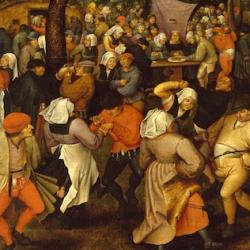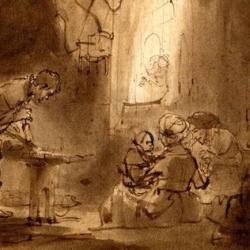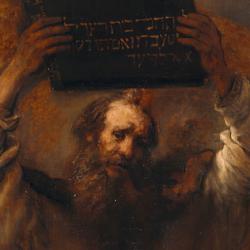In a 1962 article in JBL, Houston Smith traces the connections between Exodus and the gospel of John, focusing attention on the parallels between the plagues (signs and wonders) performed in Egypt and Jesus’ signs. There are not only parallels between individual plagues and Jesus’ signs but, Smith argues, a parallel sequence.
The link of the first plague and the first sign is obvious: Jesus turns water to wine, as Moses turned the Nile to blood. The differences are of course as significant as the similarities: “Instead of creating death-dealing blood, Jesus creates life-giving wine.12 Thus we find here the first occurrence of the concept, to be found submerged in the other Johannine signs as well, that whereas Moses demonstrated divine power by works of destruction, Jesus demonstrates that same power by beneficial acts” (335). That inversion sets the pattern for the signs of Jesus.
Smith finds no parallel in John to the plagues of frogs, gnats, and flies, but from the fifth plague on, John’s account of Jesus moves alongside Exodus. He suggests there’s a link between the plague of animals (Exodus 9:1-7) and Jesus’ healing of the official’s son (John 4:46-54). Moses imposes boils (Exodus 9:8-12) but Jesus heals a lame man at a pool (John 5:2-9). Moses brings hail (Exodus 9:13-35); the fulfillment, Smith thinks, is out of order, since what corresponds to the hail is the stilling of the sea in John 6:16-21). The eighth plague of locusts who destroy Egypt’s food (Exodus 10:1-20) is inverted by Jesus’ feeding of the multitude (John 6:1-15).
The ninth plague is darkness (Exodus 10:21-29); Jesus heals a blind man (John 9:1-41). The Passover death of the firstborn matches the death and resurrection of Lazarus, the final sign in John’s “book of signs” (335-337). For this reduction of plagues from 10 to 7, Smith sees a further development in Revelation, with its various sequences of sevens.
Jesus’ signs are thus an elaboration of John’s opening thesis: The law came through Moses, grace and truth through Jesus Christ.
(Smith, “Exodus Typology in the Fourth Gospel,” JBL 81:4 [1962] 329-342.)














